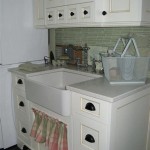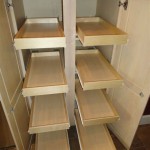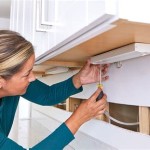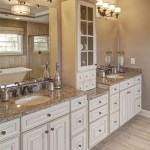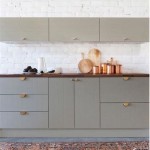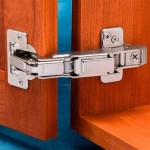The Perfect Dining Room Corner Cabinets: Functionality and Style
Dining room corner cabinets, often underestimated, serve as valuable assets for both storage and aesthetic enhancement. Their unique positioning allows them to maximize space utilization while adding a touch of elegance and sophistication to a room. Selecting the perfect corner cabinet involves careful consideration of several factors, including size, style, material, and functionality. This article explores the various aspects of dining room corner cabinets, aiming to provide comprehensive insight for informed decision-making.
The primary appeal of a corner cabinet lies in its ability to transform a typically unused corner into a functional storage area. Unlike traditional cabinets that occupy valuable wall space, corner cabinets seamlessly integrate into the room's architecture. This characteristic makes them particularly advantageous for smaller dining rooms where space is at a premium. By effectively utilizing corner space, these cabinets contribute to a more organized and clutter-free environment.
Maximizing Space and Organization
One of the most compelling reasons to consider a corner cabinet is its space-saving potential. Corners are often neglected areas in a room, representing untapped storage possibilities. A strategically placed corner cabinet can transform this wasted space into practical storage, accommodating items that might otherwise clutter the dining table or other surfaces. The interior shelving and compartments of a corner cabinet provide ample room for storing dinnerware, glassware, linens, and other dining essentials. This dedicated storage helps maintain a tidy and organized dining area, facilitating a more enjoyable dining experience.
The internal configuration of a corner cabinet is also crucial for optimizing storage. Adjustable shelves allow for customization, enabling users to accommodate items of varying sizes. Drawers can be incorporated to store smaller items such as cutlery, napkins, or serving utensils. Some corner cabinets also feature built-in lighting, which enhances visibility and adds a touch of elegance to the display. The thoughtful design of the interior space ensures that items are easily accessible and neatly organized, reducing the time and effort required to locate specific items.
Beyond storage, corner cabinets can also serve as display cases. Glass-fronted cabinets are particularly effective for showcasing cherished dinnerware, decorative items, or family heirlooms. The combination of storage and display adds depth and character to the dining room, creating a visually appealing focal point. The careful arrangement of items within the cabinet can reflect personal style and create a personalized ambiance.
Selecting the Right Style and Material
The aesthetic appeal of a corner cabinet is paramount. The style of the cabinet should complement the existing décor of the dining room, creating a cohesive and harmonious look. Corner cabinets are available in a wide range of styles, from traditional to contemporary, ensuring that there is an option to suit every taste and preference. Traditional corner cabinets often feature intricate carvings, moldings, and antique hardware, evoking a sense of timeless elegance. In contrast, contemporary corner cabinets tend to have cleaner lines, minimalist designs, and modern finishes, aligning with a more streamlined aesthetic.
The choice of material is equally important, impacting both the appearance and durability of the corner cabinet. Wood is a popular choice, offering warmth, natural beauty, and exceptional longevity. Different types of wood, such as oak, maple, cherry, and walnut, provide varying grain patterns and color tones, allowing for customization to match existing furniture. Painted cabinets, typically finished in neutral colors such as white, cream, or gray, provide a versatile option that can seamlessly integrate into various décor schemes. Metal and glass accents can also be incorporated to add a touch of modernity and visual interest.
The size of the corner cabinet must be carefully considered to ensure it fits proportionally within the dining room space. A cabinet that is too large can overwhelm the room, while one that is too small may appear insignificant. It is essential to measure the corner space accurately and take into account the height of the ceiling and the dimensions of surrounding furniture. A well-proportioned corner cabinet will enhance the overall balance and harmony of the room, rather than detracting from it.
Considering Functionality and Practicality
Beyond aesthetics, the functionality of a corner cabinet is a key consideration. The intended use of the cabinet will influence the features and design elements that are most important. For example, if the primary purpose is to store dinnerware, sturdy shelves and ample storage space are essential. If the cabinet is intended to display collectables, glass doors and interior lighting are desirable features. Some corner cabinets also incorporate additional features such as built-in wine racks or serving surfaces, enhancing their versatility.
The accessibility of the corner cabinet is another important factor to consider. The doors should open smoothly and easily, allowing for convenient access to the contents. Shelves should be adjustable to accommodate items of different sizes. Drawers, if included, should glide effortlessly and provide ample storage for smaller items. The overall design of the cabinet should prioritize ease of use and functionality, ensuring that it serves its intended purpose effectively.
Durability is a critical consideration when investing in a corner cabinet. The materials used in its construction should be of high quality and designed to withstand regular use. Solid wood construction is generally more durable than particleboard or MDF, although the latter can be acceptable if properly constructed and finished. The hardware, such as hinges, knobs, and drawer slides, should also be of good quality to ensure smooth operation and long-lasting performance. A well-built corner cabinet will provide years of reliable service, making it a worthwhile investment.
The placement of the corner cabinet within the dining room is also an important consideration. The cabinet should be positioned in a way that maximizes its functionality and minimizes any obstruction of traffic flow. Ideally, the cabinet should be located in a corner that is easily accessible and does not interfere with the movement of diners around the table. The proximity of the cabinet to the dining table is also a factor to consider, as it should be conveniently located for serving and accessing items during meals.
In conclusion, selecting the perfect dining room corner cabinet involves careful consideration of several factors. The cabinet should be chosen based on its ability to maximize space and organization, its style and material should complement the dining room's décor, and its functionality and practicality should meet the specific needs of the user. By taking these factors into account, one can select a corner cabinet that enhances the beauty and functionality of their dining room, creating a more enjoyable and organized dining experience.

Highland Corner Cabinet

Diy Corner Cabinet For Dining Room Tutorial Thrifty And Chic

50 Best Corner Cabinets For Dining Room Foter

Neutral Cottage Style Corner Hutch In Love With This Transformation Pine And Prospect Home

Diy Corner Cabinet For Dining Room Tutorial Thrifty And Chic

Homestyles Seaside Lodge Wood Corner China Cabinet In Off White

Okd Corner Tall Wine Cabinet Racks Buffet Rustic With Doors And Shelves For Dining Room Kitchen Dark Oak

How To Transform Your Dining Room Corner Cupboard Best Tips

Amish Grand Arts And Crafts Corner Dining Hutch

Dining Room Cabinet Designs For A Sleek And Organized Space
Related Posts

